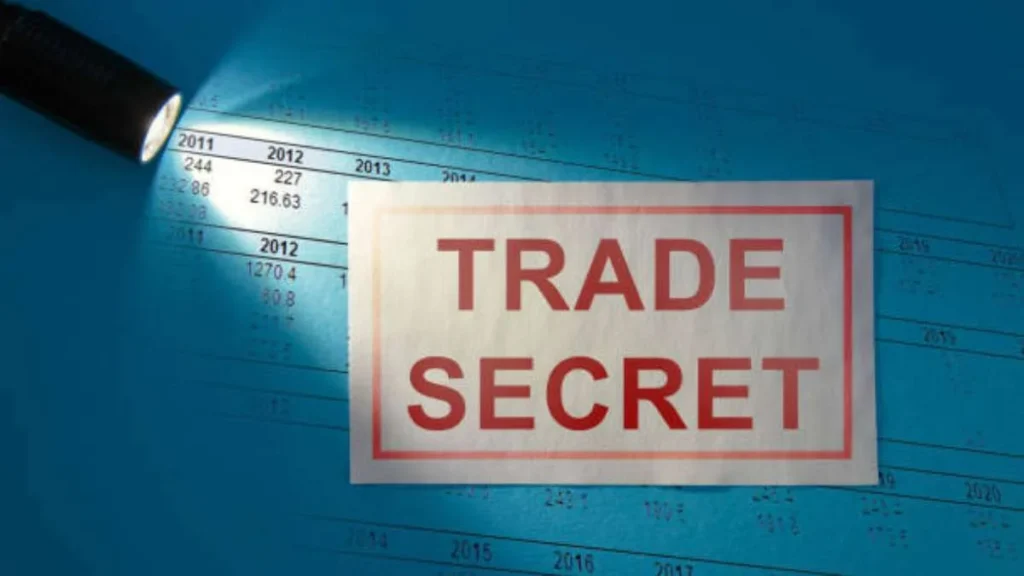Law
The Basics of a Trade Secret Lawsuit: What You Need to Know

Have you ever considered what happens when a trade secret falls into the wrong hands? The ramifications can be both immediate and devastating, leading to costly trade secret lawsuits and a damaged reputation.
In this blog post, we explore the complexities of trade secret lawsuits, providing expert insights from experienced professionals. You’ll uncover top strategies for preventing leaks and learn essential steps to take if your valuable information is compromised. Read on to acquire the knowledge needed to effectively safeguard your business’s most sensitive assets.
Table of Contents
What is a Trade Secret?
To begin with, let us define a trade secret. Any proprietary business knowledge that provides a business with a competitive advantage is considered a trade secret. This might be anything from a customized customer list to a proprietary manufacturing method (think Coca-Cola).
The key is that this information is kept secret. Companies take various steps to protect this information from being disclosed. Once this secret is out, it can be tough to claim it was ever a secret in the first place.
How Do Trade Secrets Get Stolen?
There are a lot of ways trade secrets can get stolen. Sometimes, it’s through corporate espionage, which sounds dramatic but happens more often than you think. Other times, it’s as simple as an employee leaving one company and taking confidential information with them to a new job.
Theft can also happen digitally. Hackers might break into a company’s network and steal valuable data. Regardless of how it happens, the impact can be devastating for businesses. When a trade secret is stolen, companies can lose their competitive edge, leading to financial losses and a damaged reputation.
What is a Trade Secret Lawsuit?
When a company believes its trade secret has been stolen, it might file a trade secret lawsuit. This is a legal action taken to protect their confidential information and seek compensation for any damages.


In a trade secret lawsuit, the company (plaintiff) sues the person or entity (defendant) they believe is responsible for the theft. The goal is to stop the unauthorized use or disclosure of the trade secret and to recover any losses.
How Does a Trade Secret Lawsuit Work?
So, how does this all play out in court? Here’s a basic rundown of the process:
Filing the Complaint
The first step in a trade secret lawsuit is for the plaintiff to file a complaint. This document outlines the details of the trade secret, how it was allegedly stolen, and what damages the company has suffered as a result. It also names the defendant and explains why they believe this person or entity is responsible.
Preliminary Injunction
Next, the plaintiff might ask for a preliminary injunction. This is a court order that can prevent the defendant from using or disclosing the trade secret while the lawsuit is ongoing. It’s a way to try and stop the bleeding before the case is resolved.
Discovery
Once the lawsuit is underway, both sides enter the discovery phase. This is where they gather evidence to support their claims. It can involve things like interviews, document requests, and depositions. This phase can be lengthy and detailed, as both parties build their cases.
Trial
If the case doesn’t settle during discovery, it goes to trial. Each side presents its arguments, and the court decides whether a trade secret was stolen and what the consequences should be. The court might order damages to be paid or issue a permanent injunction to protect the trade secret.
Proving a Trade Secret
Proving that a trade secret was stolen can be tricky. The plaintiff has to show that the information was a trade secret, that it was stolen, and that it caused harm.
The Information Was a Trade Secret
To prove this, the plaintiff needs to show that the information was valuable because it was secret and that they took reasonable steps to keep it secret. This could include things like non-disclosure agreements, security measures, and employee training.
The Information Was Stolen
Next, the plaintiff has to prove that the defendant acquired the information through improper means. This could be through theft, bribery, espionage, or breach of a confidentiality agreement.
Harm Was Caused
Finally, the plaintiff needs to show that the theft of the trade secret caused harm. This could be financial losses, damage to reputation, or loss of competitive advantage.
Defending Against a Trade Secret Lawsuit
If you find yourself on the receiving end of a trade secret lawsuit, it’s important to know your options. Defending against these claims can be challenging, but it’s not impossible.
The Information Was Not a Trade Secret
One defense is to argue that the information wasn’t a trade secret. Maybe it was already public knowledge, or the company didn’t take reasonable steps to keep it secret.
No Improper Means
Another defense is to show that the information was not acquired through improper means. For example, maybe you developed the information independently or obtained it through legitimate means.
No Harm Caused
Ultimately, one could argue that the company didn’t experience significant harm from the alleged theft. Although the impact might seem minimal, evaluating the true damage is complex and nuanced. Proving this definitively could be challenging, requiring detailed evidence, analysis, and strong legal representation to support this position.
However, it’s important to consider whether the plaintiff’s claims appear exaggerated or if there are mitigating factors that lessen the perceived harm. Examining this aspect during legal proceedings might offer a more balanced view of the incident and its consequences.
When to Hire a Lawyer
Trade secret lawsuits can be complex and high-stakes. Whether you’re suing or being sued, it’s a good idea to hire a lawyer who specializes in intellectual property law. Trademark lawyers, in particular, have the expertise to navigate these tricky waters and can help protect your rights.


Winning Your Trade Secret Lawsuit
In summary, navigating a trade secret lawsuit requires a keen understanding of both your rights and responsibilities. The stakes are high, with potential financial losses, reputational damage, and legal complexities at every turn.
By taking preventive measures to secure your trade secrets and seeking expert legal guidance if disputes arise, you can better protect your business’s valuable assets. Stay proactive, stay informed, and ensure that your trade secrets remain just that-secret.
Want to learn more? Don’t forget to explore our other articles before you leave!
-



 GENERAL3 weeks ago
GENERAL3 weeks agoUncovering the World of кинокрадко: The Dark Side of Film Piracy
-



 GENERAL2 weeks ago
GENERAL2 weeks agoUnveiling the Art of преводсч: How Translators Bridge Language Barriers
-



 GENERAL3 weeks ago
GENERAL3 weeks agoThe Journey of iamnobody89757: From Anonymous User to Internet Sensation
-



 YOGA4 months ago
YOGA4 months ago4 Person Yoga Poses for Beginners


















